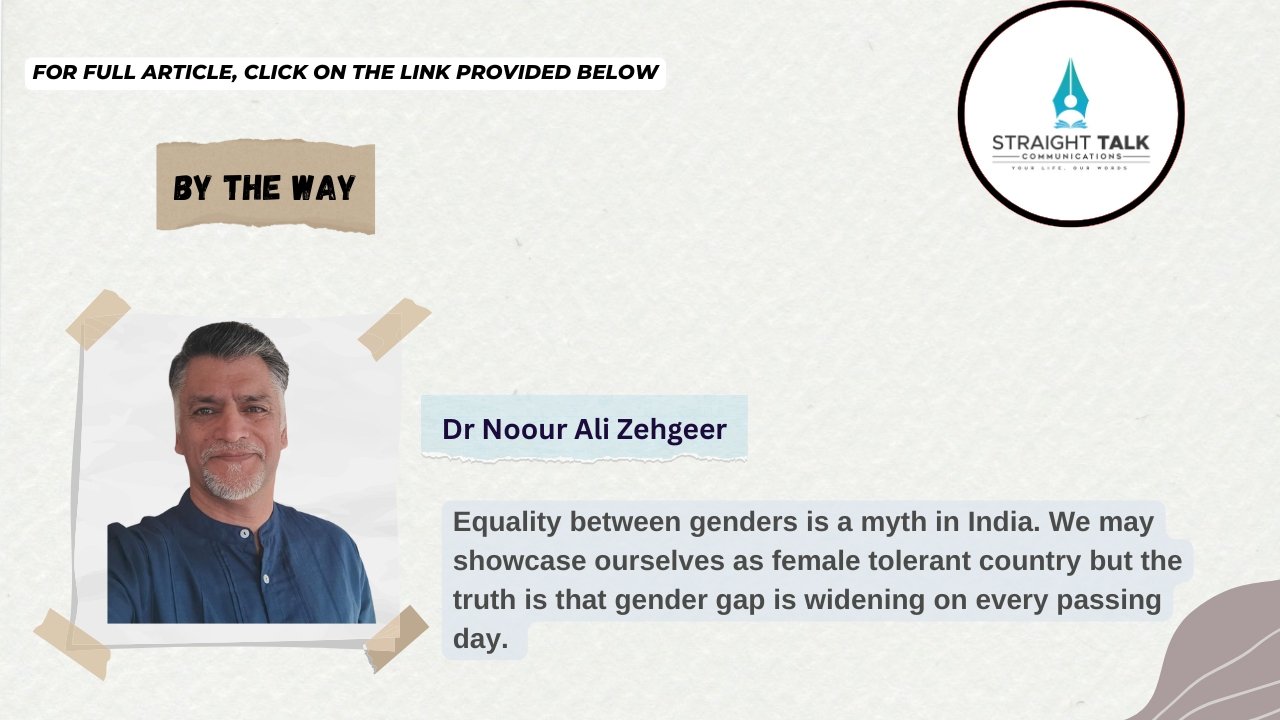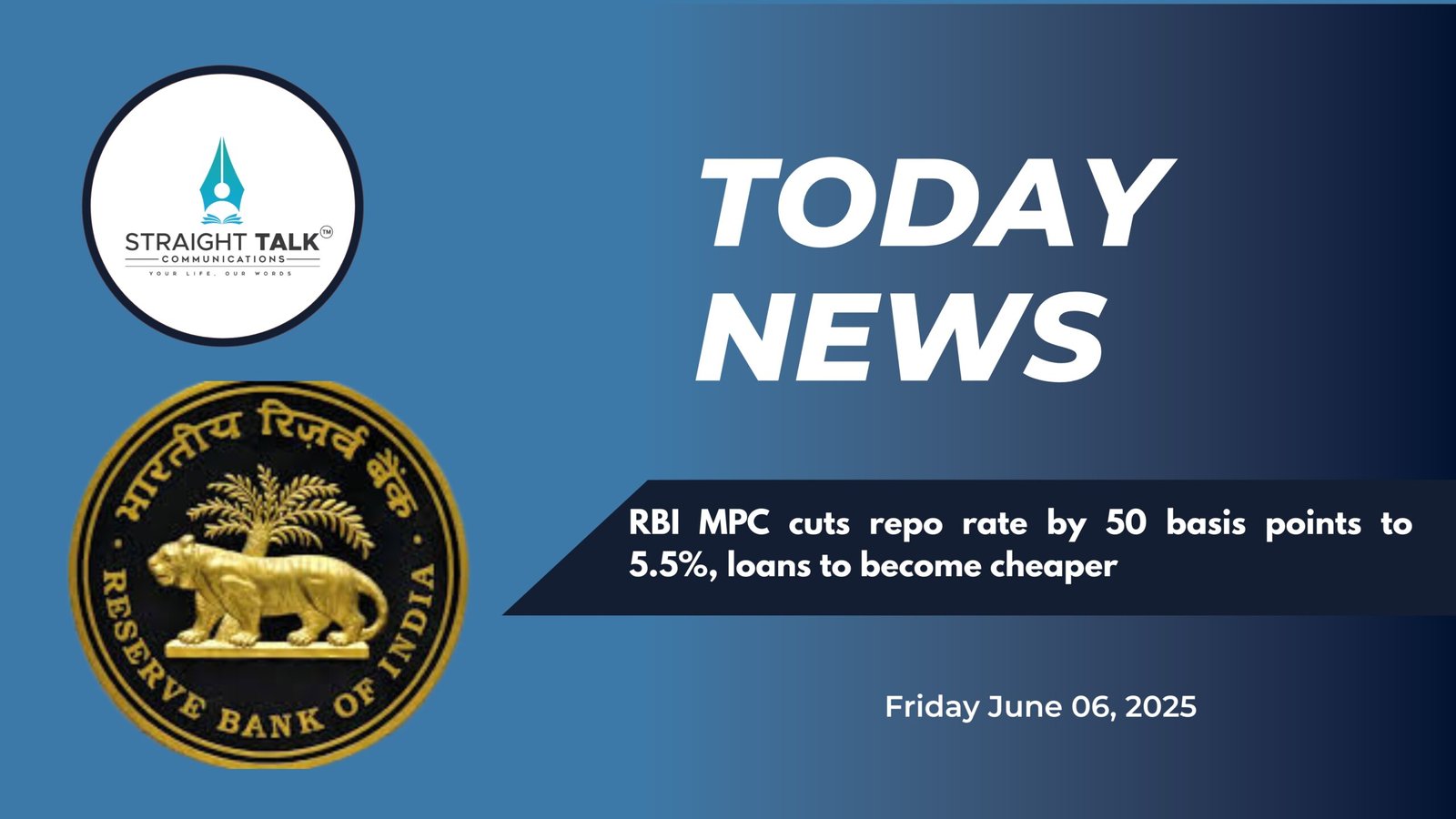Gender Gap Widening: A National Alarm, Not Just a Statistic

Dr Noour Ali Zehgeer
Equality between genders is a myth in India. We may showcase ourselves as female tolerant country but the truth is that gender gap is widening on every passing day. Men In India are becoming more intolerant against women and women in India is fighting for her rights and existence. A country where women is worshipped in the name of Durga and Sita, same country does not treat females at par with men.
India’s consistent decline in the Global Gender Gap Index should be a matter of national concern. In the 2024 Global Gender Gap Report by the World Economic Forum, India was ranked 131st out of 148 countries—slipping two positions from the previous year. This drop does not merely indicate a statistical decline but highlights the persistent structural and cultural barriers that women in India continue to face. In a world slowly inching towards gender parity, India’s regression underscores deeper systemic failures.
The Gender Gap Index evaluates countries across four crucial pillars: economic participation and opportunity, educational attainment, health and survival, and political empowerment. India’s overall score stands at 64.1%, falling short of the global average of 68.5%. Worryingly, within South Asia, India trails behind nations like Bangladesh, Nepal, Sri Lanka, and Bhutan—countries with fewer economic resources but stronger commitments to gender equity.
Economic Inequality: A Stubborn Divide
Despite some movement in women’s economic involvement, India’s female labour force participation remains low at 45.9%. Women continue to be overrepresented in undervalued sectors like caregiving, education, and health—often receiving significantly lower pay than men for similar work. The persistent gender wage gap—ranging from 20–30%—shows no sign of narrowing.
Crucially, unpaid domestic work done predominantly by women remains invisible in economic data. This unaccounted labour forms the backbone of India’s informal economy but is still not recognized in the country’s GDP. Such oversight perpetuates the idea that women’s work is secondary, both economically and socially.
Education: Access Isn’t the Same as Equity
India has made considerable progress in primary education, but secondary and higher education remain challenging for many girls, especially those from rural or marginalised communities. The female literacy rate stands at approximately 70%, well below the global average of 87%.
Participation in science, technology, engineering, and mathematics (STEM) fields remains abysmally low among women. Girls continue to drop out due to societal pressures, early marriage, lack of sanitation facilities in schools, and conservative family mindsets. The education system, while expanded, has not adequately addressed these gender-specific barriers.
Health and Survival: Deep Disparities Persist
India’s ranking in health and survival continues to be a point of concern. The sex ratio at birth is approximately 929 girls per 1,000 boys—a glaring indicator of societal preference for sons. This is not merely a demographic imbalance but reflects gender-biased practices such as sex-selective abortions and neglect of girl children.
Rural women face heightened risks due to malnutrition, maternal health complications, and inadequate access to healthcare. Anemia is still prevalent among adolescent girls and pregnant women, while lack of awareness and accessibility to reproductive health services widens the health gap.
Within families, women’s health is often deprioritized, with nutrition and care commonly directed toward male members. These disparities are less about medical infrastructure and more about ingrained social values.
Political Participation: Promise Without Practice
While women’s political participation has grown marginally over the decades, it remains insufficient. Currently, women hold only 13.8% of seats in Parliament, and a mere 5.6% of Cabinet positions. This, despite the passage of the Women’s Reservation Bill in 2023, which aims to reserve one-third of legislative seats for women. Unfortunately, its implementation remains stalled due to delays in the census and constituency reorganization.
The disconnect between policy formulation and execution is evident. Without political resolve and urgency, such reforms remain symbolic rather than transformational.
Lessons from Neighbours
Countries like Bangladesh and Nepal, despite their own economic limitations, have managed to make significant strides toward gender parity. Bangladesh, through investments in female education and microfinance, has empowered rural women and improved their socio-economic status. Nepal’s constitution mandates women’s participation in local governance, setting a strong precedent in inclusive policymaking. These examples demonstrate that political will, not just financial resources, determines progress. India must adopt similar targeted strategies with a firm commitment to results.
The Economic Case for Gender Equality
Gender parity is not only a human rights issue but an economic imperative. According to the McKinsey Global Institute, bridging the gender gap in India could add $700 billion to the country’s GDP by 2025. A more inclusive workforce leads to stronger economic outcomes and enhances productivity and innovation.
Moreover, gender-inclusive policies in education, health, and governance contribute to more stable and resilient societies. Ensuring women’s equal participation isn’t just morally right—it’s strategically smart.
The Way Forward: From Plans to Practice
India’s development narrative will remain incomplete until it embraces gender equality as a core principle. The following steps are vital:
Prioritise the implementation of the Women’s Reservation Bill by expediting the census and constituency delimitation. Recognise unpaid domestic labour in national statistics and offer social protections like pensions and health insurance to homemakers. Create safe, inclusive, and flexible workplaces, particularly in rural and semi-urban areas, to boost female employment. Ensure women’s representation on company boards and in leadership positions across sectors.
Launch mentorship programs for women in technology, science, politics, and business to nurture future leaders. Bridge the digital gender divide by providing affordable devices and internet access along with digital literacy training at grassroots levels. Mandate the collection of gender-disaggregated data in all government schemes to assess progress and guide policy.
Conclusion: A National Priority
India’s slide in gender rankings is not just an international embarrassment; it is a national crisis. The statistics reveal a reality where half the population remains marginalized from the country’s progress. Without equal access and opportunity for women, the vision of a ‘Viksit Bharat’ or developed India will remain aspirational.
The tools for change—laws, policies, and frameworks—already exist. What’s urgently needed is the courage to act. Only when women are equally represented, respected, and rewarded will India truly advance as a just, inclusive, and prosperous nation.







